Expert Guide to Repairing Your Bathroom Fan
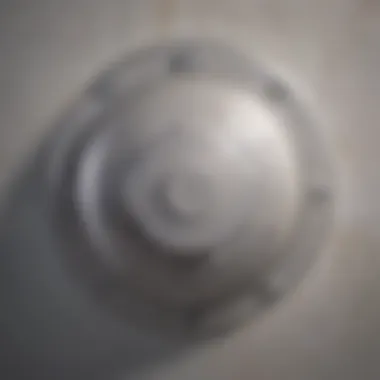
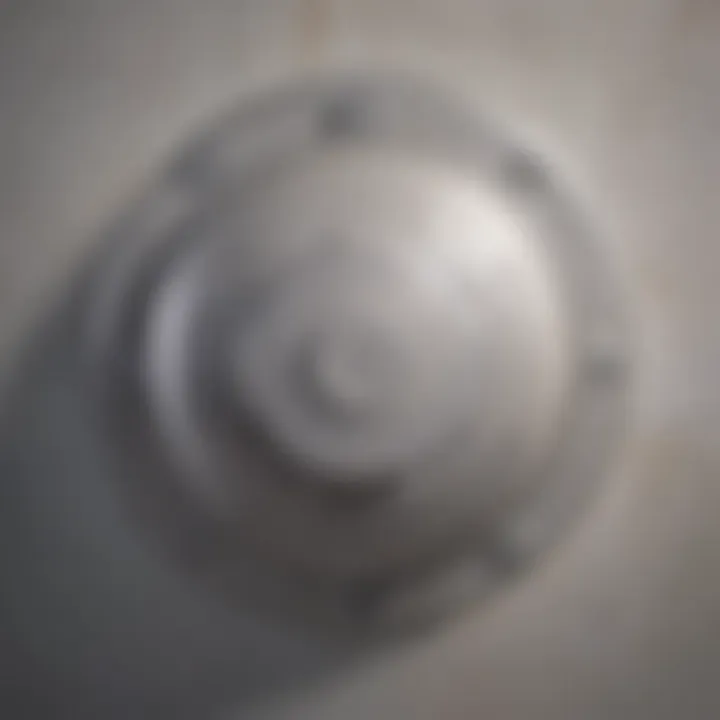
Intro
Bathroom fans serve a vital role in maintaining air quality and preventing moisture buildup in your home. However, like any other appliance, they can encounter issues that may require attention. Understanding the common problems associated with bathroom fans and knowing how to troubleshoot them can save time and money. This guide will help house owners and housewives navigate through the necessary steps to effectively address fan malfunctions and restore functionality.
Materials:
Before diving into repairs, it is important to gather all necessary materials. Having everything on hand will streamline the process and reduce frustration.
- Replacement fan unit (if necessary): Often, the entire unit may need replacement. Choose a model compatible with your current ductwork.
- Screwdriver (flathead and Phillips): For removing screws from the fan cover and mounting bracket.
- Wire stripper: Needed for electrical work, if you are replacing the fan.
- Electrical tape: For insulating electrical connections during repairs.
- Multimeter: To check voltage and ensure the fan is receiving power.
- Vacuum cleaner or dust cloth: For cleaning dust and debris from the fan and surrounding areas.
- Wire nuts: To secure electrical connections if replacing the wiring.
- Safety goggles: Always prioritize safety when working with electrical appliances.
Detailed Instructions:
Step 1: Safety First
Before starting any work, ensure that power is turned off at the circuit breaker. This helps to avoid any risk of electric shock. Always wear safety goggles while performing repairs to protect your eyes from debris.
Step 2: Inspect the Fan
Remove the cover of the fan using a screwdriver. Inspect the fan blades for any obstructions. Clean away any dust or debris using the vacuum cleaner or cloth. Try to spin the blades by hand; if they do not move freely, this may indicate a mechanical failure.
Step 3: Check the Power Supply
Using a multimeter, check if the fan is receiving power. Set the meter to the appropriate voltage setting and test the wires leading to the fan. If there is no power, the issue may stem from a faulty circuit or switch.
Step 4: Replace Faulty Components
If you determine that the motor or the whole fan unit is defective, you may need to replace it. Disconnect the wiring carefully, using the wire stripper to remove insulation from the ends of the wires. Connect the new fan according to the manufacturer's instructions, making sure to use electrical tape to secure any connections.
Step 5: Reassemble the Unit
Once repairs are made, reattach the fan cover securely. Ensure all screws are tightened to avoid any vibrations during operation. Turn the power back on and test the fan to confirm that it is functioning properly.
Technical Aspects:
Tools List:
- Screwdriver set
- Wire stripper
- Multimeter
- Vacuum cleaner or dust cloth
- Safety goggles
Timing Specifics:
- Disassembly and inspection: 15-30 minutes
- Electrical checks: 10-15 minutes
- Replacement of fan unit: 30-60 minutes
Critical Techniques:
Properly insulating electrical connections is vital to avoid future issues. Ensuring that wires are securely connected will prevent malfunctions and enhance safety.
Sequential Steps:
- Turn off power and gather materials.
- Remove the fan cover and inspect components.
- Check power supply and diagnose issues.
- Replace faulty parts as needed.
- Reassemble the fan and test functionality.
Troubleshooting Tips:
- Fan does not turn on: Ensure the power supply is intact and settings are correct.
- Fan runs but makes noise: This might be due to loose components or debris obstructing the blades.
- Fan is blowing weakly: Cleaning the fan may resolve airflow issues, or it may indicate the need for replacement.
Regular maintenance and timely repairs can extend the life of your bathroom fan and improve its efficiency.
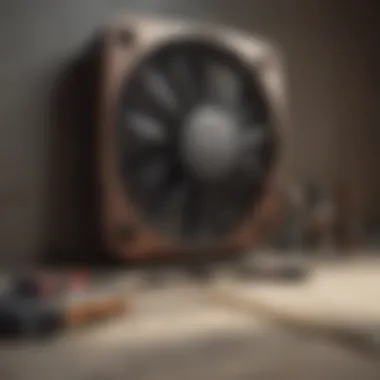
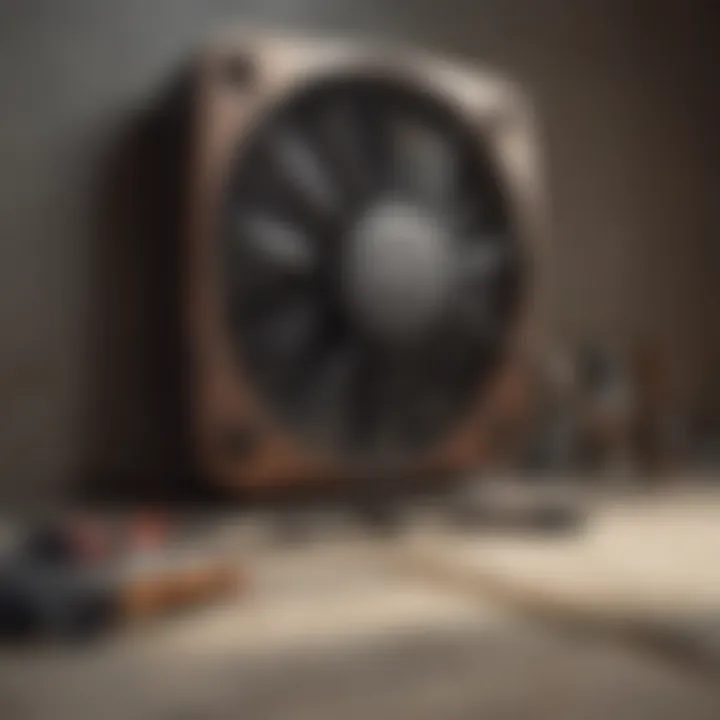
Prelude to Bathroom Fan Issues
Bathroom fans play a critical role in maintaining a healthy environment within your home. Their primary function is to facilitate proper ventilation by eliminating moisture, odors, and airborne pollutants from the bathroom. Without an effectively working fan, the space can quickly become a breeding ground for mold and mildew, which can severely affect both health and home structures.
This article discusses common issues encountered with bathroom fans, equipping homeowners with the knowledge to diagnose and repair these problems effectively. Understanding how bathroom fans function and the difficulties they may face is essential. Awareness can lead to timely actions that minimize potential damage.
Understanding the Function of Bathroom Fans
Bathroom fans are primarily designed to extract humidity and improve air circulation. They work by drawing moist air out of the bathroom and expelling it outside, which helps prevent excessive dampness that can lead to mold growth. The effectiveness of a bathroom fan depends on its capacity to remove moisture relative to the size of the bathroom. An adequately sized fan is crucial; otherwise, humidity may linger even with the fan running.
In addition to humidity control, a well-functioning fan contributes to the overall air quality in the bathroom by eliminating odors and reducing airborne bacteria and viruses. Their placement, typically near the shower or bathtub, further optimizes performance, capturing humidity at the source.
Common Problems Faced with Bathroom Fans
Several issues can plague bathroom fans, leading to inefficient performance or complete failure. Recognizing these common problems is the first step towards resolution.
- Noise: Excessive noise can indicate wear and tear, misalignment, or an imbalance in the blades.
- Insufficient airflow: This may arise from blockages in the ductwork or inadequate fan size for the room.
- Electrical issues: Problems like power supply interruptions or faulty wiring can prevent the fan from functioning altogether.
- Failure to turn on: This could be due to a blown fuse, switch malfunction, or other electrical issues.
- Moisture accumulation: Lack of proper airflow might result in persistent moisture, leading to a less than ideal environment, and potentially harmful growths.
Understanding these issues allows homeowners to take proactive measures or seek appropriate assistance for repairs or replacements.
Diagnosing the Problem
Diagnosing the problem with a bathroom fan is a critical first step in the repair process. Whether the fan is ineffectively removing moisture or not running at all, identifying the root cause can save time and avoid unnecessary expenses. A systematic approach helps to pinpoint whether the issue lies in the electrical system, mechanical components, or simple obstructions that may impede function.
Addressing problems early prevents further damage. Ignoring a malfunctioning fan can lead to issues such as mold growth, poor air quality, and even structural damage to the bathroom. Moreover, understanding where to begin inspecting allows homeowners to tackle repairs more efficiently, thus minimizing disruption to daily routines.
Checking for Electrical Issues
When diagnosing a bathroom fan, the first area to examine is the electrical system. A fan that does not turn on could indicate various electrical issues, such as blown fuses or faulty wiring. Begin by checking the circuit breaker; sometimes, the breaker might trip, interrupting power to the fan.
- Inspect the power cord: Ensure it is firmly plugged in and not damaged. If the fan is connected to a switch, test to see if the switch is functioning correctly.
- Test voltage: Use a multimeter to check for voltage at the fan's connection point. If there is no voltage, the issue may originate from upstream wiring or a defective switch.
Checking the electrical integrity may require careful examination. If you are uncomfortable working with electricity, it is prudent to contact a professional electrician, especially if you identify issues beyond simple troubleshooting.
Assessing Mechanical Failures
Once electrical issues are ruled out, the focus should shift toward potential mechanical failures. Fans are composed of moving parts, which can wear out over time. Problems here can manifest as odd noises, such as grinding or rattling, or complete failure to operate.
- Examine the fan blades: Ensure they are free of debris and can spin without obstruction. Blades bent or damaged may need to be replaced to restore efficiency.
- Check the motor: The motor itself may be burned out or malfunctioning. Inspect the motor for signs of wear, overheating, or any unusual odors.
In the event of mechanical failure, lubrication may often be necessary. Applying appropriate lubricant to the motor or bearings can assist in restoring normal function, provided mechanical parts are still in good condition.
Identifying Obstructions and Accumulation
The last area to consider is any possible obstructions or accumulation that could impede the fan's ability to operate effectively. Dust and debris tend to accumulate in various parts of the bathroom fan, particularly in the vent or housing, reducing airflow significantly.
- Clean the exterior: Begin by wiping down the grille or cover. Remove it if possible to gain access to the fan blades for a thorough cleaning.
- Inspect the ducting: Check for blockages in the duct that leads outside. Accumulated lint or dirt can severely restrict airflow, causing the fan to work harder and eventually fail.
- Look for mildew: An abundance of mildew or condensation suggests that the fan is not performing adequately. Clear any mold or mildew found around the fan and ventilation ducts to enhance overall air circulation.
Cleaning and maintaining the fan ensures it operates correctly and prolongs its lifespan. Regular inspections can prevent build-up and potential mechanical failures.
Tools and Materials Needed
Having the right tools and materials is crucial when fixing a bathroom fan. A well-equipped toolkit ensures that repairs are not only efficient but also effective. Using improper tools can lead to additional damage or even further complications. Thus, proper preparation prior to beginning any maintenance task is vital.
Essential Tools for Repairs
When dealing with a bathroom fan, several essential tools are necessary for preventive maintenance and repair tasks:
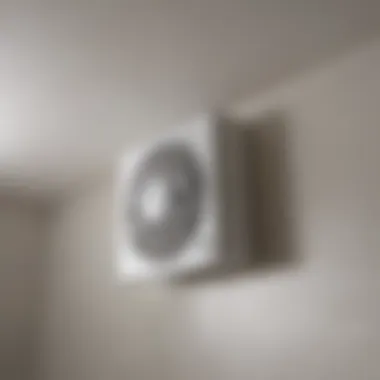
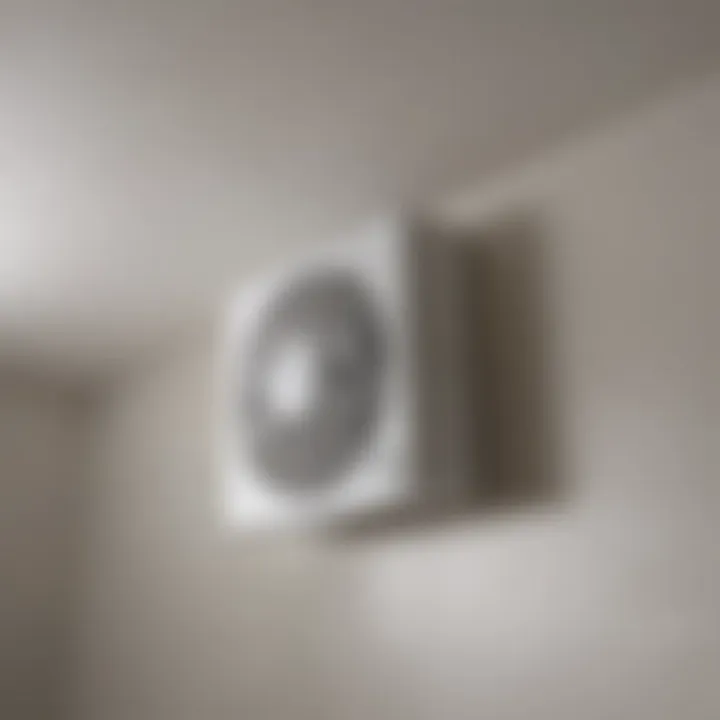
- Screwdrivers: A flathead and a Phillips screwdriver will often suffice. These are required to remove cover plates and access the fan's internal components.
- Pliers and Wrenches: Use these for gripping and twisting, especially when working with secured parts.
- Multimeter: A multimeter is critical for checking voltage and ensuring electrical connections are secure. This tool helps diagnose electrical issues effectively.
- Utility Knife: It may be useful for cutting through any insulation or coverings that obstruct access to the fan.
- Vacuum Cleaner with Brush Attachment: This will assist in removing dust and debris without causing damage to the fan blades or motor.
- Lubricant: A light machine oil is recommended for lubricating the moving parts, helping to ensure smooth operation and prolonging the fan’s lifespan.
Purchasing quality tools is a worthwhile investment. Cheaper options may lead to inefficiency and frustration during repairs.
Safety Equipment Recommendations
Safety is paramount when performing electrical repairs. Appropriate safety equipment minimizes the risk of injury. Keep the following items available:
- Safety Goggles: Protect your eyes from dust and debris while working.
- Gloves: Use sturdy gloves when handling tools and parts; they provide grip and protect your hands from sharp edges.
- Dust Mask: If the fan is dusty, a dust mask can prevent inhalation of particles during maintenance.
- Non-slip Shoes: Wearing shoes with good traction is important to avoid slipping, especially if working in a damp bathroom environment.
Always turn off the power supply to the fan before beginning any repair or inspection to ensure safety.
By gathering the necessary tools and equipment, you will set a solid foundation for a successful bathroom fan repair. Adequate preparation leads to a quicker resolution of issues and ultimately enhances the fan's performance.
Step-by-Step Troubleshooting Guide
In this section, we embark on a meticulous journey through the troubleshooting process of a bathroom fan. When a fan ceases to function optimally, it can lead to lingering moisture and poor air circulation in your bathroom. A systematic troubleshooting guide allows homeowners to pinpoint the issue effectively, facilitating prompt repairs or maintenance. This approach not only saves time but also enhances the longevity and efficiency of the fan. By following a step-by-step method, users navigate through various concerns with clarity and precision.
Power Supply Verification
The first step in troubleshooting begins with verifying the power supply. Without power, the fan is unable to operate, rendering all other checks futile. To begin, inspect the circuit breaker box for tripped breakers. If a breaker has tripped, reset it and see if the fan operates. Additionally, check for any blown fuses, which are common issues in older homes. Using a multimeter can provide accurate readings of voltage at the fan’s connection. This will confirm if power is reaching the unit. A lack of voltage may indicate more extensive electrical issues, requiring professional assistance.
Fan Inspection and Cleaning
Once power is confirmed, the next task is a thorough inspection of the fan itself. Dust accumulation can inhibit a fan's performance significantly. Begin by removing any covers or grills, which may trap dirt and debris. Inspect the blades for dust buildup; this can restrict airflow and hinder efficiency. Use a damp cloth to clean the blades gently, ensuring no damage occurs during cleaning. Look for signs of rust or corrosion in metal components. If the fan appears dirty and neglected, regular cleaning is advised to maintain functionality and hygiene.
Lubricating Moving Parts
Mechanical failure often leads to annoying noises during operation or even a complete stall. To counter this, lubrication of the moving parts is essential. Utilizing a silicone-based lubricant, apply a small amount to the motor shaft and bearings. This will reduce friction and wear. Avoid over-lubrication, which might encourage dust accumulation. It is prudent to consult the fan’s manual for specific guidance regarding lubrication needs, as certain models may have unique requirements. Regular lubrication can extend the lifespan of your fan, enhancing both performance and efficiency.
Resetting the Fan Unit
If issues persist despite the previous checks, consider resetting the fan unit. Many modern fans feature a reset button, often located near the motor. Pressing this button may resolve minor electronic malfunctions and restore normal operation. If no reset button is present, power cycling the fan can have a similar effect. Switch off the power at the circuit breaker for a few minutes before turning it back on. This action will allow the electronic components to reset. If the fan operates after this, the issue was likely minor, warranting attention to ongoing maintenance.
Repairing or Replacing Components
Repairing or replacing components is a critical aspect of maintaining the functionality of your bathroom fan. Over time, various components may fail or become inefficient due to wear and tear, which can greatly affect the performance of the fan. Understanding which components need attention and how to address these issues can help enhance air circulation, improve energy efficiency, and prolong the life of the unit. Additionally, this approach can save you money in the long run by preventing the need for a complete fan replacement.
Replacing a Burned-Out Motor
When a bathroom fan stops working altogether, one of the primary suspects is a burned-out motor. This component is vital as it powers the fan blades to move air effectively. If you discover that the motor is not functioning, first ensure that power is reaching the unit. If another electrical issue is ruled out, replacing the motor could be necessary.
The process usually involves removing the fan cover, detaching the motor from its mount, and installing a new one. Be sure to purchase a motor that matches the specifications of your original unit, considering the voltage and RPM ratings. Always disconnect the power before beginning any work to ensure safety.
Installing New Blades or Covers
Fan blades can become bent or damaged over time, which could lead to decreased performance or increased noise. Installing new blades is a straightforward task that can significantly improve your fan's efficiency. It’s advisable to select blades that are compatible with your specific fan model.
Covers, also, can be replaced for aesthetic reasons or to remove accumulated dirt. Choose a cover that aligns with your bathroom decor while ensuring it permits sufficient airflow. This installation process generally involves removing screws, replacing the components, and reattaching with proper fittings.
Replacing the Entire Unit
In some cases, it may be more feasible to replace the entire bathroom fan unit rather than attempting repairs. This might be especially true if the fan is old, inefficient, or has suffered multiple issues. Modern fans often feature improved energy efficiency and quieter operation, which can enhance the comfort of your bathroom significantly.
When considering a replacement, measure the space to ensure a proper fit. Review energy ratings and features to select a unit that meets your needs. Installation typically includes disconnecting the old unit, fitting the new one into place, and ensuring proper connection to existing ductwork and electrical lines.
By assessing whether to repair or replace components, homeowners can maintain their bathroom fans effectively. A well-functioning fan contributes to a healthy indoor environment. Taking these steps ensures optimal ventilation and longevity of your home fixtures.
Maintaining Your Bathroom Fan
Proper maintenance of your bathroom fan is essential for ensuring its longevity and efficiency. A well-maintained fan not only improves the air quality in your bathroom but also helps prevent the buildup of moisture and mold. These issues can lead to costly repairs and health complications, making regular upkeep crucial.


Key Benefits of Maintenance:
- Improved Efficiency: A clean and well-functioning fan operates more effectively, ensuring that moisture and odors are removed quickly. This minimizes the risk of humidity-related problems.
- Cost Savings: Regular maintenance reduces the likelihood of major repairs or replacements, protecting your wallet from unforeseen expenses.
- Enhanced Lifespan: Just like any appliance, bathroom fans perform better when they are cared for. Regular checks prolong the life of the unit, giving you more value for your investment.
Consider these specific elements when maintaining your bathroom fan. Regular cleaning and inspections should form the basis of your maintenance routine.
Regular Cleaning Practices
Cleaning your bathroom fan may sound simple, but it plays a critical role in its performance. Regular cleaning helps remove dust, dirt, and grease that can accumulate, hindering airflow. Here's how to do it:
- Turn Off Power: Always disconnect the power supply before beginning any cleaning to prevent electrical hazards.
- Remove Fan Cover: Take off the cover to expose the blades and motor.
- Dusting: Use a soft brush or cloth to gently remove dust. Avoid using wet materials; moisture can damage the motor and electrical components.
- Vacuum: If necessary, you can use a vacuum to eliminate stubborn dirt debris. This is especially important for older fans that attract more buildup over time.
- Use a Damp Cloth: A lightly damp cloth can be used on the cover to ensure it is spotless.
- Reassemble and Test: After cleaning, put everything back together and power the fan back on to ensure it runs smoothly.
Remember, dusting should be done at least every few months, while more thorough cleaning might be necessary once or twice a year.
Scheduling Periodic Inspections
Periodic inspections are vital in catching potential issues before they escalate. During an inspection, you should check for various factors that affect the fan's performance. Regular inspections can help you identify:
- Worn Out Components: Listen for unusual noises or vibrations that could indicate parts are failing. Addressing these issues early can prevent costly repairs.
- Electrical Faults: Examine the wiring and connections for signs of fraying, corrosion, or loose connections. Electrical problems can lead to safety hazards.
- Operational Efficiency: Test the fan's airflow with a piece of tissue paper. If the tissue does not move, airflow might be obstructed or the motor could be failing.
Setting up a schedule for inspections is advisable. Consider doing this at least once a year as part of your home maintenance routine.
"An ounce of prevention is worth a pound of cure." Regular maintenance and inspections can prevent larger issues from forming, saving time and money in the long run.
When to Call a Professional
Deciding whether to tackle bathroom fan issues personally or to call in a professional can be challenging. Homeowners must weigh the complexity of the problems at hand alongside their own skills and knowledge. Understanding when to seek professional assistance is crucial.
Identifying Complex Issues
Certain problems with bathroom fans may go beyond simple troubleshooting or maintenance. If you notice persistent noise after cleaning, irregular fan operation, or electrical smells, these are signs of complex issues. Additionally, problems that involve wiring or circuit malfunctions should raise red flags. These may include frequent blown fuses or a fan that fails to respond despite receiving power. Dealing with these scenarios can be dangerous and requires specialized tools and knowledge. In such cases, it is wise to consult a professional who can properly diagnose and handle the repairs.
It's essential to recognize when a task exceeds your capability.
Safety Considerations for Electrical Work
Working with electricity can pose significant risks. If you feel uncertain about handling electrical components of your bathroom fan, do not hesitate to reach out to an expert. Professionals are trained to work safely with electrical systems, and they understand the local codes and regulations that apply.
When dealing with wiring, power supply, and connections, the potential for electric shock is high, especially in a moisture-prone area like a bathroom. Additionally, incorrect repairs can lead to further damage or electrical fires, making it essential to prioritize safety. It is better to invest in professional help than to compromise safety for the sake of saving costs.
In brief, identifying symptoms of complex issues and respecting safety considerations are key factors in deciding when to hire a professional for bathroom fan repairs.
Considerations for Upgrading
Upgrading your bathroom fan can make a significant difference in your home's ventilation and overall energy efficiency. An outdated fan may not only underperform but also lead to higher energy costs. When reevaluating your bathroom fan, several key aspects should be at the forefront of your decision-making process.
- Energy Efficiency Standards
The modern bathroom fan should meet current energy efficiency standards. Energy-efficient models are designed to operate with less power while still providing optimal airflow. The Energy Star certification is an important guideline to consider when selecting a new fan. These models consume less energy and can provide significant savings on electricity bills over time. Additionally, by reducing energy consumption, you contribute to an overall reduction in greenhouse gases. - Choosing a Fan for Optimal Performance
When selecting a new fan, it is crucial to choose one that meets the specific airflow needs of your bathroom. The size and layout of the bathroom dictate the appropriate fan capacity, measured in cubic feet per minute (CFM). A fan rated for the right CFM will effectively remove excess moisture and odors, improving indoor air quality. Moreover, consider the noise level of the fan. Today, quieter models exist that can maintain strong performance without being disruptive. Look for fans with a low sones rating, which indicates quieter operation.
When contemplating an upgrade, weigh the benefits against the potential costs. An efficient fan can enhance the comfort and health of your living space. In summary, a thoughtful upgrade can lead to better airflow, enhanced energy savings, and improved indoor air quality.
"Investing in a new bathroom fan is not merely a decision of repair; it is a commitment to a healthier and more efficient home environment."
Taking the time to research and understand these considerations can lead to a well-informed choice and a long-lasting solution for your ventilation needs.
End
The closing section of an article plays a vital role in rounding up the various aspects discussed earlier. Here, we can specifically reflect on the necessity and benefits of maintaining a functional bathroom fan. It is essential to acknowledge that bathroom fans serve not just as conveniences but as critical components in maintaining air quality in homes. Proper ventilation helps to control humidity levels and prevents the growth of mold or mildew, which can damage walls and create unhealthy living conditions. When homeowners overlook their maintenance, it may lead to costly repairs or even replacements.
The Importance of a Functional Bathroom Fan
A functional bathroom fan is often overlooked. It is a necessary part of home maintenance. A properly working fan alleviates excess moisture, which can be particularly problematic in the humid environment of bathrooms. When these components operate effectively, they help keep interiors dry and free from bacteria. Regular functioning of the bathroom fan is not merely for comfort; it helps protect the structural integrity of the home.
Investing in regular checks and cleaning routines is essential for long-lasting performance. Furthermore, eliminating blockages and ensuring no electrical issues exist will significantly extend the life of these devices.
"Regular maintenance is the key to ensuring your bathroom fan operates for years to come."
Final Thoughts on Maintenance and Repairs
When it comes to addressing maintenance and repairs, it is always better to be proactive rather than reactive. Scheduling periodic inspections is vital for identifying issues before they escalate into more significant repairs that can be expensive. Homeowners should develop a maintenance schedule that aligns with their usage, considering how often the bathroom is used.







